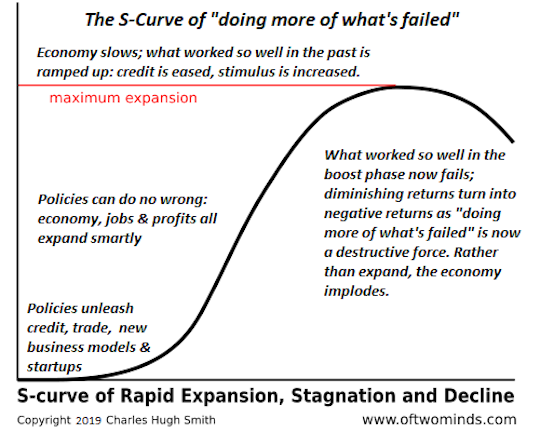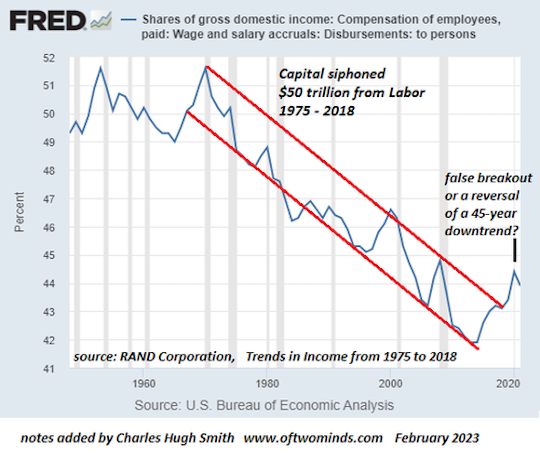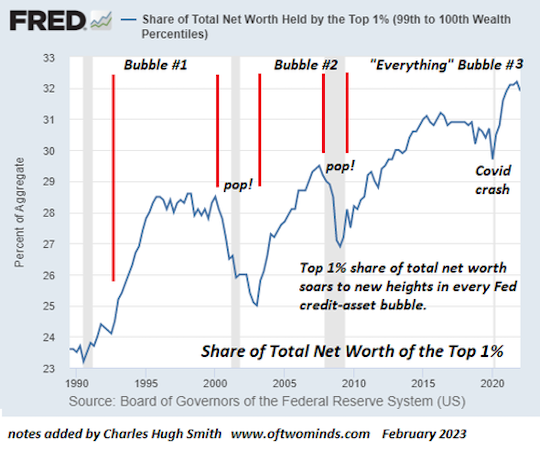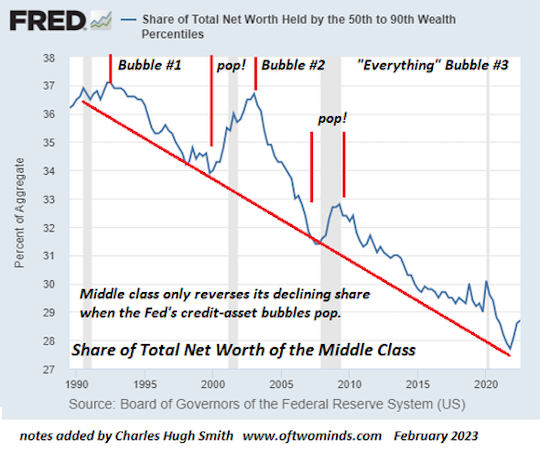Zero Rates? 2023 Is Not 2008
- The dissolution of the USSR and the end of the hyper-expensive, heightened-risk Cold War.
- The flood of low-cost oil as all the super-giant fields discovered in the 1970s began peak production.
- China emerged as the low-cost "workshop of the world," enabling 30 years of soaring corporate profits as corporations reduced costs by offshoring production to China.
- This offshoring boosted profits while deflating the costs of production due to much lower labor costs, lax / non-existent environmental standards and Chinese producers' willingness to accept razor-thin profit margins.
- The reduction in global risk and the deflationary impact of Globalization (offshoring and opening new markets) enabled central banks to lower interest rates for 30 years without sparking inflation and private-sector banking/lending to expand credit and leverage, effectively globalizing /commoditizing financial instruments that hedged risks (Financialization).
- After a decade-long lag (the 1980s), the advances in personal computing, software and desktop publishing finally began generating productivity increases.
- The economic theology of Neoliberalism was embraced globally. Neoliberalism claims "markets solve all problems" and so the universal solution is to turn everything into a market by reducing regulations and state oversight.
- China launched the largest credit expansion in history (Russell Napier's phrase) to counter the meltdown.
- The Federal Reserve and other central banks began a policy of financial repression (i.e. centrally managing financial markets rather than let market forces dictate liquidity, price, risk, etc.), leading to Zero Interest Rate Policy (ZIRP) that was effectively negative-rates since inflation continued sputtering along at 1.5% to 2%.




- Excessive debt levels that can only be managed by inflating the debt down to manageable levels.
- Scarcities of essentials which push prices above what consumers can afford while not being high enough to fund massive new investments needed to increase supply.
- The cost of capital must rise to reflect the rising risk premium globally.













 Email us
Email us
